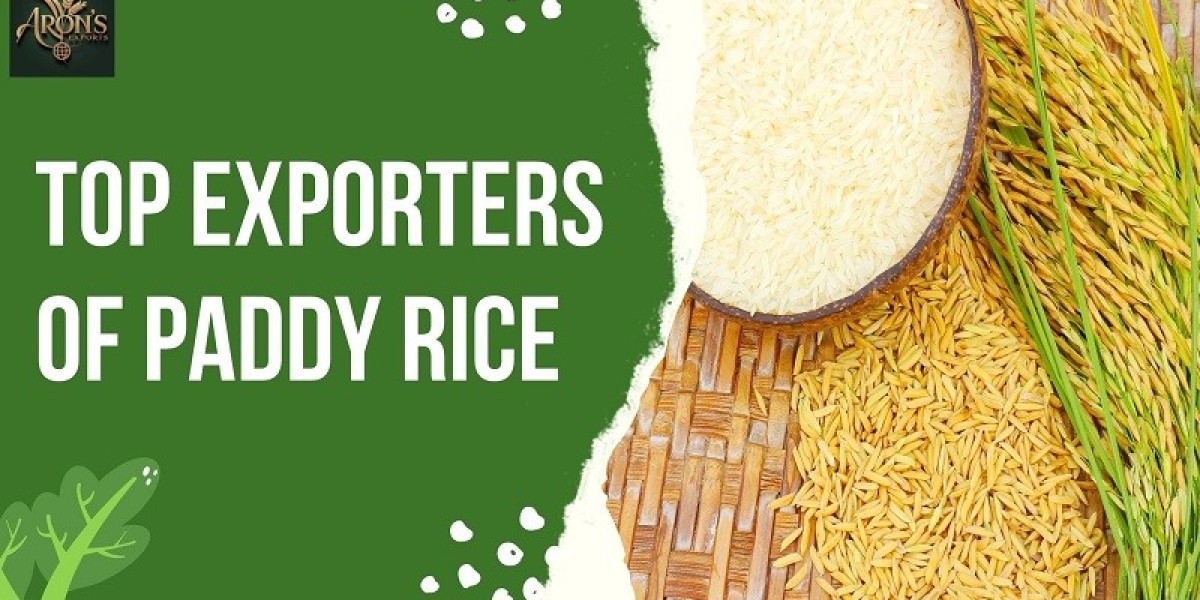The global rice industry is one of the most dynamic and vital sectors in international trade, feeding billions and driving economies across continents. Among the many commodities traded globally, paddy rice stands as a cornerstone of food security and agricultural commerce. Understanding the trade routes of the top exporters of paddy rice offers insights into how global supply chains operate efficiently, connecting farmers, traders, and consumers worldwide.
In this blog, we explore how leading rice-exporting nations have built robust trade networks, the logistics behind paddy rice exports, and the evolving strategies that ensure the grain reaches markets in optimal condition.
1. The Global Significance of Paddy Rice Exports
Paddy rice, also known as rough rice, is the unprocessed form of rice harvested from the field before milling. Its global trade has steadily expanded due to increasing demand in Africa, the Middle East, and parts of Latin America. The top exporters of paddy rice — including countries like India, Thailand, Vietnam, Pakistan, and the United States — dominate the global market through strategic trade routes, advanced logistics, and consistent quality standards.
These exporting countries play a crucial role in stabilizing international food supply chains. When one region faces shortages or climatic disruptions, exporters step in to balance the demand-supply gap, ensuring food availability across borders.
2. Mapping the Major Trade Routes of Paddy Rice
The trade routes for paddy rice are vast and interconnected, often shaped by geography, logistics infrastructure, and international partnerships.
a. Asian Export Routes
Asia, the hub of rice cultivation, contributes over 80% of global exports.
India, the largest exporter, ships paddy rice through major ports like Kakinada, Mundra, and Chennai, reaching destinations across Africa, the Gulf region, and Southeast Asia.
Thailand relies heavily on Laem Chabang Port for exports to China, Indonesia, and the Philippines.
Vietnam utilizes the Mekong Delta’s efficient river network, exporting through Ho Chi Minh City to markets in Africa and the Middle East.
b. American and African Routes
The United States, though smaller in quantity, exports high-quality paddy rice via the Mississippi River system and Gulf Coast ports, supplying premium markets in Latin America and Europe.
In West Africa, countries like Nigeria and Senegal, though primarily importers, are developing regional trade networks to re-export processed rice within the continent.
c. Maritime Dominance and Ocean Freight
Sea routes remain the backbone of paddy rice exports. With cost-effective container shipping, exporters can maintain freshness and reduce spoilage. The Indian Ocean, South China Sea, and Pacific trade lanes are among the busiest, carrying millions of tons of rice annually.
3. Logistics and Quality Control in Export Operations
Exporting paddy rice requires meticulous handling to maintain grain quality and prevent damage. The top exporters of paddy rice invest heavily in storage, transportation, and quality assurance systems.
Efficient Storage and Handling
Post-harvest, paddy rice is stored in temperature-controlled silos to reduce moisture and preserve freshness. Advanced grading systems ensure that only export-quality batches reach the market.
Transportation and Packaging
From the farms to the ports, the grain is transported in bulk carriers or sealed containers to prevent contamination. Modern exporters use vacuum-sealed bags and eco-friendly packaging, reflecting global sustainability trends.
Compliance and Certifications
International buyers increasingly demand certifications such as ISO, HACCP, and Organic certifications. This ensures transparency and builds trust between exporters and importers.
4. Economic Impact of Paddy Rice Exports
The paddy rice export industry is not just about trade—it’s about livelihoods, employment, and economic development. The top exporters of paddy rice collectively generate billions in annual revenue, supporting farmers and small-scale producers.
India alone accounts for over 40% of global rice exports, contributing significantly to its agricultural GDP.
Vietnam and Thailand maintain competitive pricing and high-quality standards, strengthening their global market presence.
Pakistan specializes in aromatic varieties like Basmati, which fetch premium prices in global markets.
For developing nations, rice exports serve as a reliable source of foreign exchange, helping stabilize economies and fund agricultural innovation.
5. Challenges in Global Rice Trade
Despite its success, the paddy rice export sector faces various challenges that can impact trade flow.
Climate Change: Extreme weather conditions affect yield and quality.
Trade Regulations: Export bans or tariffs can disrupt supply chains.
Rising Freight Costs: Increased shipping rates add to export expenses.
Quality Consistency: Meeting international standards remains a constant priority for exporters.
Overcoming these challenges requires investment in sustainable farming, better irrigation, and advanced logistics solutions.
6. Future of Paddy Rice Trade and Export Opportunities
The future looks promising for global paddy rice exporters. Rising population growth, urbanization, and dietary diversification are fueling demand for rice worldwide. Countries are now investing in:
Digital supply chain systems for better traceability.
Sustainable farming practices to meet eco-friendly trade demands.
Market diversification to reduce dependence on traditional buyers.
Companies like Aron Baijnauth emphasize quality, reliability, and sustainability, ensuring that their paddy rice exports align with international standards. Such forward-thinking approaches contribute to a stronger and more transparent global rice trade network.
Moreover, Aron Baijnauth and similar exporters are leveraging technology to enhance efficiency — from automated grain sorting to AI-based shipping optimization. This modernization not only boosts competitiveness but also ensures consistent product quality across export markets.
7. Conclusion
The trade routes of the top exporters of paddy rice represent more than lines on a map — they symbolize the interconnection of global economies, the dedication of millions of farmers, and the intricate systems that keep the world fed.
As trade routes evolve and sustainability becomes central to agriculture, leading exporters will continue to adapt, innovate, and deliver excellence. Through efficient logistics, quality assurance, and responsible trade practices, the future of paddy rice exports promises growth, stability, and prosperity for all stakeholders in the global rice market.






